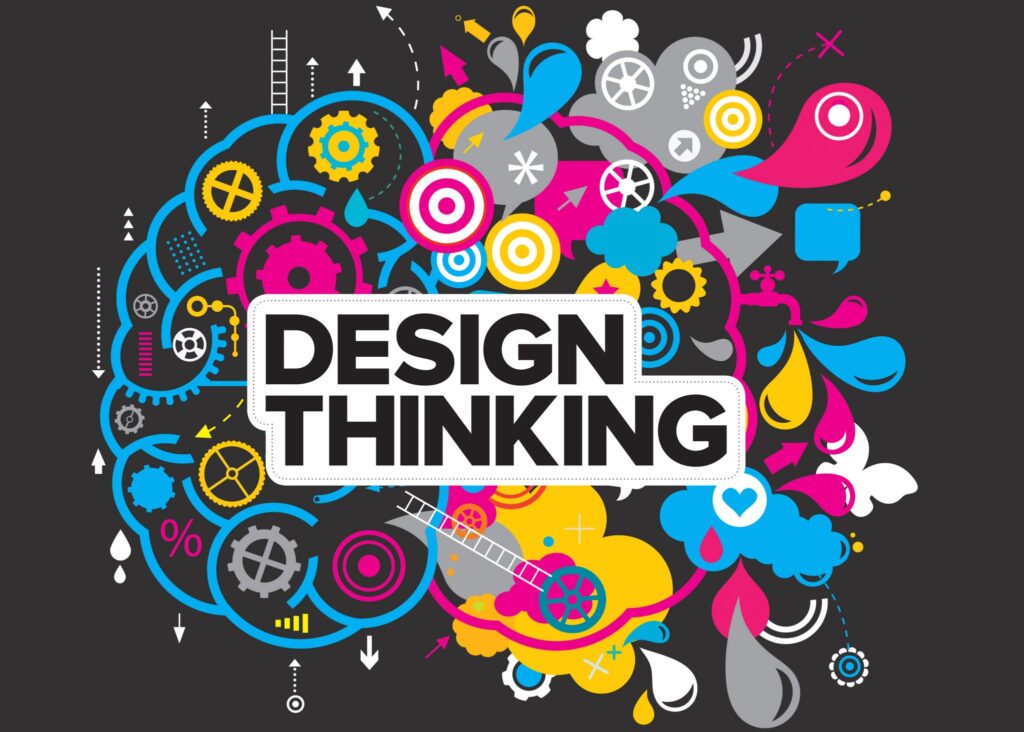Discover the process that’s transforming how leaders are creatively solving business challenges. It’s called design thinking.
“Creativity is just connecting things,” Steve Jobs once said. “When you ask creative people how they did something, they feel a little guilty because they didn’t really do it, they just saw something. It seemed obvious to them after a while. That’s because they were able to connect experiences they’ve had and synthesize new things.”
Just such a connection was made a little more than decade ago when a Japanese company saw a leveling off of growth in demand for its high-end bicycle parts. Shimano hired a design firm, IDEO, to help it understand the changes taking place in its core market: road-racing cycling and mountain biking. The combined team came up with a simple but insightful question: Why do so many people stop riding bicycles after childhood? The answer led to the synthesis of a new thing: the basic, easygoing, adult-friendly coaster bike. In less than a year, according to IDEO, the three original manufacturers sold all of the 30,000 coaster bikes they had made.
“Design thinking begins with skills designers have learned over many decades in their quest to match human needs with available technical resources within the practical constraints of business.”
That lesson in creativity is the first of many in “Change by Design: How Design Thinking Transforms Organizations and Inspires Innovation” by IDEO President Tim Brown. “Design thinking begins with skills designers have learned over many decades in their quest to match human needs with available technical resources within the practical constraints of business,” Brown writes. “By integrating what is desirable from a human point of view with what is technologically feasible and economically viable, designers have been able to create the products we enjoy today. Design thinking takes the next step, which is to put these tools into the hands of people who may have never thought of themselves as designers and apply them to vastly greater range of problems.”
A System of Overlapping Spaces
Design thinking, Brown says, is an approach to problem-solving in which inspiration, ideation and implementation occur not in sequence but as “a system of overlapping spaces.” He says projects may “loop back” through those spaces many times as ideas are refined and new ones explored. “Design thinking is fundamentally an exploratory process; done right, it will invariably make unexpected discoveries along the way, and it would be foolish not to find out where they lead.”
Where have some of these unexpected discoveries led?
- After a San Francisco entrepreneur realized that the quality of its photography was hurting bookings for a startup lodging site, Airbnb saw weekly revenues double and marked a turning point in its amazing story.
- A “zone of chaos” around the counters at busy Chick-fil-A restaurants was made less chaotic during a process that saw crews build 15 foam-core prototypes in a single day.
- Faster, more useful exchanges of information between nurses at shift changes came after it was decided to conduct those conversations in the presence of the patient.
- A series of what Apple’s Jobs called “insanely great products” that include its first mouse, designed by IDEO.
“Design thinking has led to thousands of breakthroughs,” ’60 Minutes’ reported in 2013, listing easier to-use kitchen tools, a re-imagined classroom chair, a talking heart defibrillator, and Tivo’s thumbs up, thumbs down button. In boiling down the approach for Charlie Rose, IDEO founder David Kelley said it is “empathetic to people.” His advice: “Try to understand what they really value.”
Bringing Design Thinking Home
If Tim Brown wrote the book on design thinking, the Stanford University Institute of Design that Kelley leads developed the curriculum. The ‘d.school,’ as it is known, offers on its website more than a dozen tools as well as a healthy reading list. “Use our methods,” the site recommends. Here are five that could help introduce elements of design thinking into nearly any marketing organization, along with some d.school guidance on each:
Brainstorm. “Brainstorming can be used throughout a design process; of course to come up with design solutions, but also any time you are trying to come up with ideas … .”
Why-How laddering. “When considering the needs of your user, start with a meaningful one. Write that need on the board and then ladder up from there by asking ‘why.’ ”
Interview for empathy. “By understanding the choices that person makes and the behaviors that person engages in, you can identify their needs, and design to meet those needs.”
Saturate and group. “Saturate your wall space (or work boards) with post-its headlining interesting findings … plus pictures from the field of users you met and relevant products and situations.”
Prototype to test. “In creating prototypes to test with users you have the opportunity to examine your solution decisions as well as test your perception of your users and their needs.”
Turning Questions into Answers
One idea seems to pervade most everything said or written about design thinking; and that is its focus on customers and their needs. Marketers understand they must be their organizations’ foremost experts on both. But at the same time, they can’t be afraid to ask questions. Design thinking is an innovative way to turn good questions into better answers.



